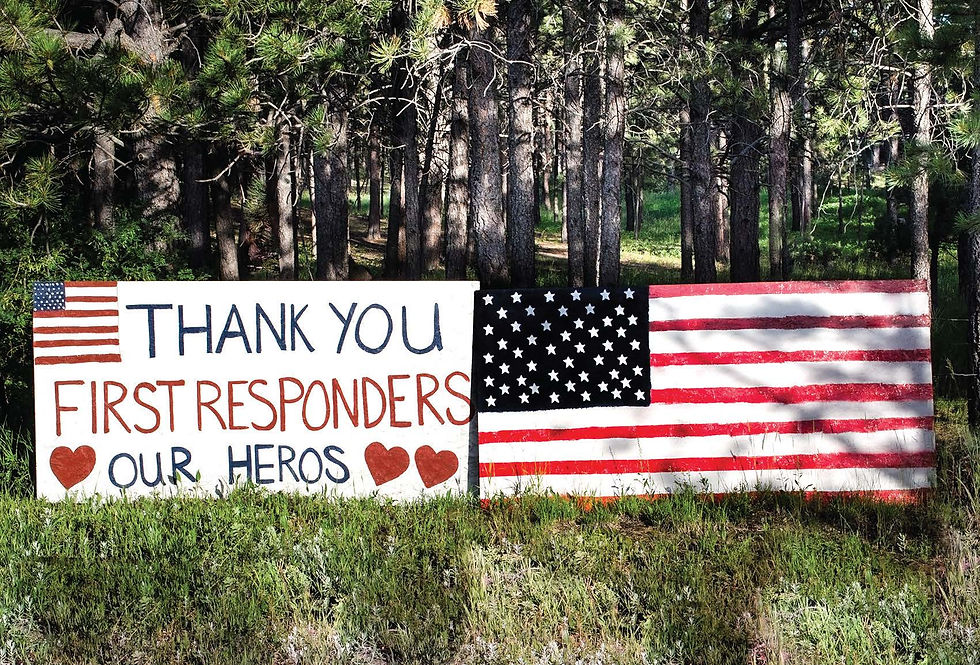What You Must Know About Emergencies and Disasters Before They Happen
- Autism Digest

- Oct 6, 2022
- 3 min read
Updated: May 6, 2024

None of us look forward to dealing with emergency situations, but they can present a uniquely difficult challenge for people with disabilities, particularly autism. For individuals who generally need routine, predictability, and clarity, a high-intensity emergency can be extremely destabilizing and, often, terrifying.
An autistic person may be too overwhelmed by an earthquake or a police officer yelling “Freeze!” to follow directions or answer questions. It might appear that he is under the influence while trying to process the situation. This can lead to tragedy, as happened in September this year in Utah. A mother of an autistic teenage boy called 911 for help with a mental health crisis he was having, and armed officers shot him when he tried to flee on foot. This type of incident is a tragedy for both the family of the teenage boy, the boy, and the officer.
However, his case is representative of far too many instances where, in the heat of the moment, the lack of understanding of autism can lead to avoidable escalation and subsequent trauma for all: the individuals on the spectrum, the family and the officers or other professionals hoping to help.
Plenty of ways exist in which parents and authority figures in the community can help to prepare autistic children and themselves for emergency situations.

FIRST, parents can teach children what first responders look like. Kids can then learn that police, firefighters, and paramedics are there to keep them safe. Even though the uniforms and equipment can sometimes make them look scary, these people can be trusted. A great way to introduce this concept is through the use of social stories and video stories. These provide an important visual support when preparing children for a situation, so that it becomes less daunting when it happens in real life.
Pre-prepared social stories and video stories can be found online and in apps. InnerVoice (the communication app I created) has video stories embedded that will prepare kids for a whole range of situations, from encountering different first responders to experiencing disasters, such as fires, hurricanes, and floods.

Emergency Video Stories are also
available on YouTube and created with InnerVoice --
First Responders https://youtu.be/ FSfL2f5wWlE
Hurricanes https://youtu.be/ WQ9HXu_DPPw
Fire https://youtu.be/ wCuiLuYlHM8
SECONDLY, having a well-rehearsed plan of action gives families a sense of security and safety, during and after an emergency. With InnerVoice, families can easily create their own video stories for any situation, introducing their child to a recognizable narrative in advance.
The app also uses the highly effective evidence-based strategy of video-modeling and video self-modeling. This means that the prepared stories can be read to children by an avatar of a family member or the child himself.
THIRD, parents can further prepare children by teaching them what to say or gesture in emergency situations. These should be simple, memorable phrases or universal gestures that communicate their needs in a simple way, which should indicate to any adult around that your child is not a threat and needs to be kept safe. This might sound like, “I need help,” or “I have difficulty with…” or raising his hands palm-up.
NATURAL DISASTORS: With the increasing number of natural disasters happening every year a family emergency plan -- now more than ever -- should exist in case of an earthquake, fire, hurricane, or serious snowstorm.

First, make sure that every family member has a “Go Bag” prepared in advance, which each one keeps near the door. This is an emergency kit that will help people stay safe during a disaster, should a family be evacuated or displaced from their home. It includes things such as water, medication, a flashlight, and a communication board.
How to Make a Go Bag https://www. youtube.com/watch?v=9qlxVYozOrI&fe ature=youtu.be
If you need to download and print out an emergency communications ...
.png)







Comments